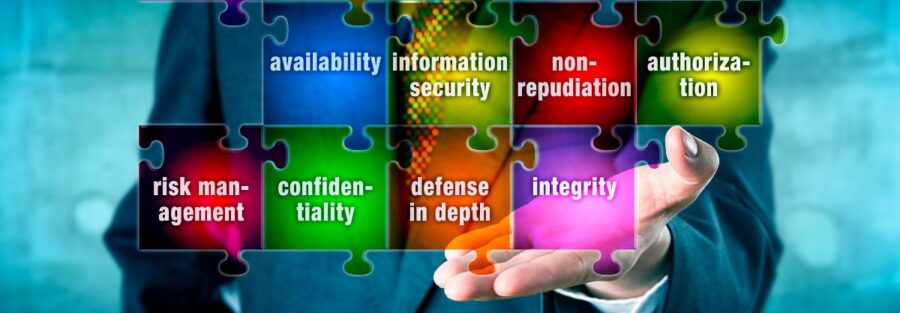Beyond Technical Controls
Information security is a paramount concern for organizations across all industries. The increasing frequency and sophistication of cyber threats necessitate robust security measures to protect sensitive data and maintain trust with stakeholders. However, many organizations fall into the trap of viewing information security narrowly, focusing primarily on technical controls, policies, and procedures. While these elements are crucial, they represent only a portion of a comprehensive security strategy. True information security extends beyond these boundaries, encompassing a broader range of factors including human behavior, organizational culture, and proactive risk management.
The Limitations of Technical Controls, Policies, and Procedures
1. Technical Controls:
Technical controls, such as firewalls, encryption, intrusion detection systems, and antivirus software, form the backbone of an organization’s defense against cyber threats. These tools are designed to detect, prevent, and mitigate attacks. However, relying solely on technical controls can create a false sense of security. Technical measures can be bypassed or compromised, especially if they are not regularly updated or properly configured. Moreover, cybercriminals often exploit human vulnerabilities, such as phishing attacks, that technical controls alone cannot fully address.
2. Policies and Procedures:
Security policies and procedures establish the rules and guidelines for managing and protecting information. They provide a structured approach to handling data, defining roles, responsibilities, and acceptable behaviors. While essential, policies and procedures are only effective if they are understood, followed, and enforced consistently across the organization. In practice, this can be challenging, as employees may not always adhere to these guidelines due to lack of awareness, understanding, or motivation.
3. The Compliance Trap:
Many organizations adopt a compliance-driven approach to security, focusing on meeting regulatory requirements and industry standards. While compliance is important, it is not synonymous with security. A compliance-centric mindset can lead to a “check-the-box” mentality, where the goal is to satisfy auditors rather than genuinely enhance security. This approach can result in gaps in the security posture, as compliance standards may not cover all potential threats and vulnerabilities.
The Broader Dimensions of Information Security
1. Human Factors:
People are often the weakest link in the security chain. Social engineering attacks, such as phishing and pretexting, exploit human behavior to gain unauthorized access to information. Therefore, security awareness and training programs are critical. Educating employees about security best practices, recognizing phishing attempts, and understanding the importance of strong passwords can significantly reduce the risk of human error. However, training should be continuous and evolving, adapting to new threats and reinforcing key messages.
2. Organizational Culture:
A strong security culture is the foundation of effective information security. It involves fostering an environment where security is a shared responsibility and is integrated into everyday business processes. Leadership plays a vital role in shaping this culture by prioritizing security, allocating necessary resources, and setting an example for employees. Encouraging open communication about security issues, recognizing and rewarding good security practices, and making security a core value can help embed security into the organizational fabric.
3. Proactive Risk Management:
Information security should be approached as a risk management discipline. This involves identifying, assessing, and prioritizing risks based on their potential impact and likelihood. A proactive approach to risk management includes regular vulnerability assessments, penetration testing, and continuous monitoring of the threat landscape. By understanding and mitigating risks before they materialize, organizations can stay ahead of potential threats and reduce the likelihood of a security incident.
4. Incident Response and Recovery:
Despite the best preventive measures, security incidents can still occur. Having a robust incident response and recovery plan is essential for minimizing the damage and ensuring business continuity. This involves preparing for various scenarios, establishing clear roles and responsibilities, and conducting regular drills and simulations. Effective incident response requires coordination across multiple functions, including IT, legal, communications, and operations. A well-prepared organization can respond swiftly and effectively to mitigate the impact of an incident and restore normal operations.
5. Third-Party Risk Management:
Organizations often rely on third-party vendors and service providers for various functions, from cloud storage to payment processing. These third parties can introduce additional risks, as their security practices may not be as robust as those of the organization. It is crucial to conduct thorough due diligence when selecting vendors, establish clear security requirements in contracts, and continuously monitor and assess third-party security practices. Managing third-party risk is an integral part of a comprehensive security strategy.
6. Security Governance:
Effective security governance involves establishing a framework for making informed security decisions, aligning security initiatives with business objectives, and ensuring accountability. This includes defining the roles and responsibilities of various stakeholders, from the board of directors to front-line employees. A governance framework should include regular reporting, performance metrics, and oversight to ensure that security policies and practices are effective and aligned with the organization’s risk appetite.
7. Innovation and Adaptation:
The threat landscape is constantly evolving, with new attack vectors and vulnerabilities emerging regularly. Organizations must be agile and adaptive, continuously innovating and improving their security practices. This involves staying informed about the latest threats, investing in new technologies, and adopting a proactive approach to security. Collaboration with industry peers, participating in information-sharing initiatives, and engaging with security researchers can provide valuable insights and enhance the organization’s security posture.
Case Study: The Importance of a Holistic Security Approach
To illustrate the importance of a holistic security approach, consider the case of a multinational corporation that suffered a significant data breach despite having robust technical controls and policies in place. The breach occurred through a successful phishing attack that targeted employees in a specific department. The attackers gained access to sensitive data, resulting in substantial financial and reputational damage.
Upon investigation, it was revealed that while the organization had invested heavily in advanced security technologies, it had neglected critical aspects such as employee training, incident response preparedness, and third-party risk management. The phishing attack exploited a lack of awareness among employees, and the absence of a well-defined incident response plan led to delays in detecting and mitigating the breach.
In response, the organization revamped its security strategy to address these gaps. It implemented a comprehensive security awareness program, established a dedicated incident response team, and enhanced its third-party risk management practices. The new approach emphasized a balanced focus on technology, people, and processes, leading to a more resilient and proactive security posture.
Information security is a multifaceted discipline that extends far beyond technical controls, policies, and procedures. While these elements are essential, they must be part of a broader strategy that includes human factors, organizational culture, proactive risk management, incident response, third-party risk management, security governance, and continuous innovation.
Organizations that recognize and address these dimensions are better equipped to protect their data, maintain trust with stakeholders, and navigate the complex and ever-changing threat landscape. By adopting a holistic approach to information security, organizations can move beyond a compliance-driven mindset and build a robust, resilient, and adaptive security posture that supports long-term success.



